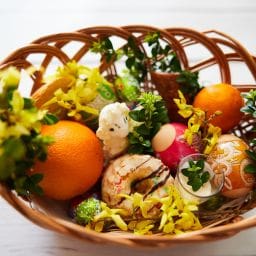🏡 Charming Chaos: Life with Duplicate Addresses in Poland
🏘️ Shared Streets, Confusing Addresses
It’s surprisingly common across Poland—especially in smaller towns and rural areas—for multiple streets to share the same name, or for the same address number to exist in more than one place within the same town or district. The result? A whole lot of confusion. And we’re not just talking about missed Amazon deliveries—this can impact everything from mail delivery to emergency service response times.
📫 Why Does This Happen?
Poland’s address confusion has roots in both historical and bureaucratic issues. Here are a few contributing factors:
- 🏘️ Villages that grew into towns often retained duplicate street names as they expanded.
- 🧭 Smaller administrative districts (gminas) sometimes reuse names independently of one another.
- 🗂️ Address numbering systems are not always consistent—some follow odd/even logic, others don’t.
- 🛠️ Some areas haven’t been properly renumbered after development or merging of municipalities.
The result is a patchwork of naming conventions that can lead to frustration even among locals.
🚑 Emergency Services and Real Risks
It’s one thing to get a pizza delivered to the wrong house—but when an ambulance, fire truck, or police officer ends up at the wrong location, the consequences can be deadly. Emergency responders sometimes rely on local knowledge or even phone guidance to reach the correct address in areas with repeated street names.
🚨 In critical situations, a few minutes of delay can make a life-or-death difference. This is why accurate addressing is more than a bureaucratic quirk—it’s a public safety issue.
📍 Real-Life Examples
Let’s say you live at “ul. Leśna 12” in a village near Kraków. There might be another “ul. Leśna 12” just five kilometres away, technically within the same postal code range. If you’re lucky, delivery drivers and emergency workers know the local layout. If not—you’re in for a frustrating time.
📦 Many expats have stories of furniture delivered to the wrong home, or prescription medication going missing thanks to a near-identical address nearby.
🧭 Can This Be Fixed?
Yes—but it’s not automatic. Address changes require cooperation between residents and local authorities (Urząd Gminy or Urząd Miasta). Here’s how communities can push for change:
- 📋 Petition the local council with signatures from affected residents.
- 📝 Provide documentation of specific issues (missed emergency calls, mail errors, etc.).
- 🗣️ Attend community meetings to raise the problem publicly.
- 📐 Propose renaming or renumbering options that avoid conflicts.
In some towns, streets have been successfully renamed after consultation, and houses re-numbered to reflect better logic and flow. It’s not a fast process, but it is doable.
📦 Living With the Confusion
If you’re stuck with a duplicate address, there are a few ways to reduce the impact:
- 📞 Always include your full postal code and locality name when giving your address.
- 📬 Add extra directions or landmarks for deliveries and visitors.
- 🧭 Use GPS coordinates for taxis or location sharing apps.
- 🚚 Choose delivery companies that allow detailed drop-off instructions.
🛑 Common Mistakes Expats Make
New arrivals to Poland may not realise how address confusion can affect them. Here are some pitfalls to avoid:
- 📮 Assuming your street name is unique within the town.
- 🗺️ Forgetting to include the name of your village or settlement.
- 🚫 Skipping the postal code on official forms.
- 🕵️ Not double-checking with estate agents or landlords about local quirks.
💡 Pro tip: Use Google Maps and Street View before signing a lease or buying property to check for duplicate addresses or misleading street layouts.
📖 A Short History of Street Naming in Poland
Street naming in Poland often follows cultural, historical, or political trends. Many towns have repeated names like “Kościuszki,” “Leśna,” or “Polna” — reflecting national heroes or geographic features. The repetition wasn’t always a problem when villages were small and isolated. But as urban sprawl crept in, the cracks in the system started to show.
🕰️ Since the 1990s, efforts have been made to rationalise these naming systems, but progress is slow and often localised.
🏡 Can You Change Your Own Address?
Not on your own. Street names and numbers are determined by the local authority. You can’t just rename your house “Rose Cottage” and expect official mail to arrive. However, informal names are sometimes used on decorative signs or gates—but they won’t be recognised by the postman or the emergency dispatcher.
✅ You can apply for a formal name change via your local Urząd, but approval depends on broader community impact and administrative feasibility.
🌐 Tech and Mapping Apps: Helpful or Harmful?
Services like Google Maps, Waze, and GPS systems have helped—but also sometimes added to the confusion. A missing data point or duplicated tag can lead visitors to the wrong part of town.
📲 Always cross-check locations and provide exact coordinates when possible. Local Polish mapping services (like Targeo) may also offer more accurate data in rural areas.
👣 Everyday Life in the Neighbourhood
Living in a Polish neighbourhood isn’t just about navigating addresses—it’s about the vibe. Expect the distant thud of someone chopping wood, impromptu grill parties that somehow start at 11 a.m. on a Tuesday, and neighbours who pop by unannounced (bearing pickles, not apologies).
🪴 Gardens are a serious business. Expect competitive tomato-growing, gnome armies, and lawn ornaments that would make Versailles blush. The postman might even comment if you miss a week of weeding.
🐔 Chickens and cats have free rein in many areas—don’t be surprised to find yourself held up in traffic by a hen named Barbara or a disinterested tabby sunning itself on a pedestrian crossing.
🧁 Expect a neighbourly exchange economy: your apples for their plum jam, your screwdriver for their snow shovel, your silence during their dog’s 6am barking spree in exchange for cake at Christmas.
🔚 Final Thoughts
While Polish neighbourhoods are full of charm and character, the quirks of street naming and address duplication can cause real headaches. Whether you’re a retiree, a working expat, or a local, it’s worth taking time to understand how the system works—and what you can do to work around it or help fix it.
👥 With community action and local government support, change is possible. Until then, keep your postal code close, your GPS handy, and your wits about you when the next package goes astray. And remember—if all else fails, follow the smell of kiełbasa. It usually leads somewhere good.
Also read: Living in Poland















